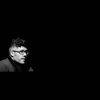My portfolio is quite varied at the moment. I have just finished Piano Interrupted's 2nd album with Franz Kirmann and a new collaboration with Max Cooper. I have also made a start on the rather daunting 80 minutes of orchestral ballet that needs writing by the end of the year for Thüringenstaatsballet. And in between, I managed to squeeze in a bespoke piano piece for the nation's favourite dog food, Cesar.
The creative impulses behind these various compositions were quite different. I turned to two sources to help me draw some comparisons: first I asked multi-faceted composer and pianist Michael Price, absolutely prolific in the media world but also with his debut release, A Stillness, on Erased Tapes and then it seemed only right to recruit Robert Raths, Erased Tapes' founder, who explains that "the Michael we are most interested in is the one off the screen, far away from deadlines, click tracks and post-production studios."
In media or bespoke composition, or compositions that will be 'applied' to something, we are beholden to forces other than ourselves- the picture's narrative, the director or the project's artistic leader perhaps.
We're often using the same techniques and textures, so I think if you zoom in at the micro-level, bar by bar, they can seem very similar. It's at the macro level, at the structural and aesthetic stage, that the very different impulse for composition becomes clear. (Michael Price)
I often start a media piece without looking at the picture; reaching for an emotional connection, and there comes a moment where I feel I could pursue a freer impulse and create a piece that stands on its own, or alternatively allow the structural requirements of where the music needs to be applied to take over.
But it is the aesthetic stage that seems to have the most blurred boundaries. Individual composers have a 'sound' (or at least we might strive to, or even acquire one by accident). Does this compositional voice carry through from media composition to making records? Yes, for the most part it does.
This crossroads seems particularly pertinent for 'prefix hyphen classical' artists. At the moment rightly or wrongly, the demand for atonal or polytonal music in media is not as great as music that contains a more readily understandable harmonic or melodic motion, and so perhaps this makes it more natural for writers in this genre to move between making records and writing bespoke commissions.
In most cases it's not really fair to try and compare the two on a musical level as they serve two very different purposes and require very different skills. The former is all about self-expression and self-control of creative freedom as well as restraint, whilst the latter usually requires the music to support a leading element and someone else's art direction.
What a lot of people forget when criticising bespoke music for its lack of artistic freedom and depth is that most original music is so rich, emotionally charged and attached to its original writer/performer that in combination with motion pictures or dance it quickly becomes too overpowering and distracts from the project. Therefore it's often compromised, but usually to the benefit of the bigger picture - no pun intended. (Robert Raths)
I sat on the Ivor Novello judging panel for best TV soundtrack this year and John Harle's score for the Lucien Freud - Painted Life stood out. Interestingly, this was partly as a result of its different tonality. And although as judges, we were looking purely for the music that did the best job to enhance the visuals to which it was attached, looking back I left with a feeling that Harle's music (admittedly in an exception to my 'prefix hyphen classical' rule) certainly worked wonderfully with the pictures but also that it would happily stand on its own too.
I'm not a huge fan of soundtrack CDs, or performances of film music, although I certainly wouldn't want to prevent people from enjoying them. It's just that, if I was to take up an hour of someone's valuable listening time, I'd like to compose something designed for that, rather than something that told a visual story. (Michael Price)
We as artists want to offer, and are in the privileged position to choose, a specifically designed audio-centric experience for our listener, rather than something that was created as part of a relationship with a picture which just happens to sound nice.
Fortunately for the likes of Michael and me, we don't necessarily have to make these decisions! Instead it is often the boutique labels such as Erased Tapes, to whom we, as listeners, turn as 'taste-makers' in our noisy digital Spotify/YouTube world, to find those exceptions to the rule where 'applied' music cries out to be heard.
Robert explains that it is about
capturing the moment where a composer discovers his own freedom and inspiration within the restraint he's been given by another individual's story, image, movement and creates something that has its own voice, a parallel existence.
Peter Broderick for example treats a score just like an album - so when he wrote the music for the documentary film 'Confluence' you could actually hear in his playing what the topic evoked in him and how it affected the community he grew up in.
It's this feeling you get from the music, when it speaks for itself. That's when a score becomes a record for us and for our listeners. (Robert Raths)
And I know as well as anyone that writing music which speaks for itself, is an achievement indeed.
